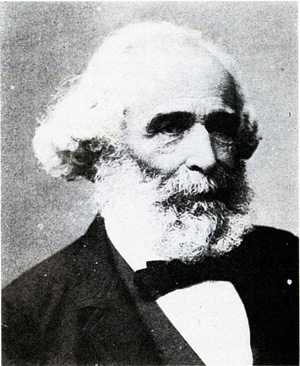Were St. Louis Jews Gray or Blue during the Civil War?
Published September 22, 2011
This story was originally published on September 22, 2011.
The nation is in the midst of marking the Sesquicentennial of the American Civil War, the conflict which President Abraham Lincoln described in the Gettysburg Address as “testing whether that nation, or any nation so conceived and so dedicated, can long endure.”
Thanks to the wisdom of Lincoln and the military skills of General Ulysses S. Grant, the nation did survive the bloody conflict that pitted brother against brother. A natural question for Cohnipedia is: what role did the Jews of St. Louis play in the Civil War? Was the St. Louis Jew Gray or Blue?
ADVERTISEMENT
When the late and beloved Isadore E. Millstone was a lad growing up in St. Louis, he recalled that on Veterans Day, “half the street’s veterans would be clad in blue for the Union Army and the other half in Gray for the Confederacy.” Through many of Millstone’s 102 years, there were living veterans of the American Civil War.
Two excellent sources about Jewish participation in the Civil War are the film, “Jewish Soldiers in Blue and Gray,” directed by Jonathan Gruber, (one of the highlights of this year’s St. Louis Jewish Film Festival), and the first volume of “Zion in the Valley: The Jewish Community of St. Louis,” by the late and esteemed Jewish historian, Dr. Walter Ehrlich.
From Gruber’s film we learn that 10,000 Jews fought in the Civil War, 7,000 for the Union Army and 3,000 for the Confederacy. Most American Jews are not surprised that there were Jewish soldiers in Lincoln’s Union Army – including St. Louis Post-Dispatch founder Joseph Pulitzer, who enlisted as a means to get out of Hungary and away from the stepfather whom he disliked.
Perhaps the most passionate St. Louis Jew to oppose slavery and support the Union cause was Isidore Bush (1822-1898). A native of Prague, Bush moved to the United States in 1849, first to New York City and then to St. Louis. In St. Louis, Bush became one of the founding members of B’nai El Congregation.
ADVERTISEMENT
In “Zion in the Valley,” Bush is praised for his “devotion to Judaism and loyalty to his adopted country. He became a prominent businessman and philanthropist and an active member of B’nai B’rith, and was one of the earliest and strongest abolitionists in Missouri. He served as a Republican member of the Missouri State Constitutional Convention during the Civil War, warmly supporting the Union cause and abolitionism in a state in which substantial support existed for the Confederacy.
Ehrlich notes that Bush suffered from physical disabilities as the result of a fire in his childhood, which “precluded military service” during the Civil War. Bush did serve the Union cause as a civilian, however, including as secretary to “flamboyant General James C. Fremont, who for a time early in the war commanded Union forces in Missouri,” writes Ehrlich.
Most American Jews were naturally opposed to slavery, a central part of the Exodus narrative.
At the same time, Jews not acquainted with the history of the Civil War are sometimes shocked that there were Jewish soldiers who put on the gray uniform of the Confederacy. How could Jews fight for the Confederacy, whose member states seceded from the Union in order to preserve the institution of slavery as a matter of “states’ rights”?
In fact, Jews played a significant role in the Confederacy, whose Secretary of State and Secretary of War was none other than Judah P. Benjamin, a highly respected attorney, who was so admired that he was once offered a seat on the U.S. Supreme Court. After the Civil War, Benjamin fled the United States for England, where he became a prominent barrister and judge.
The Civil War was indeed as divisive for American Jewry as it was for Americans in general. Pulitzer himself, a veteran of the Union Army, was later to marry Kate Davis, daughter of a prominent Episcopalian family – and a cousin to none other than Jefferson Davis, the President of the Confederacy.
According to “Zion in the Valley,” most St. Louis Jews “strongly backed the North.” He cites Mrs. Rose Harsch Fraley, who grew up in St. Louis, as recalling that “her coreligionists overwhelmingly were Republicans who opposed slavery and supported the Union.” Among those who served in the Union Army were Michael B. Jonas, who later became a prominent lawyer; Meyer Fuld, who was one of the founders of Temple Israel and an active member of B’nai B’rith and Isaac Baer, who “remained an active and widely respected member of the Jewish community until he died in 1915.”
Ehrlich adds that “very few St. Louis Jews, it seems, joined the Confederate armed forces at the outbreak of the Civil War,” adding that one who did was Philip Wohl, a native of Bohemia who had come to St. Louis by way of New Orleans. Wohl and his wife, Lena Samish, were the parents of David Philip Wohl, who “became a giant in the shoe industry as well as one of the most honored and esteemed philanthropists in St. Louis history.”
Perhaps the most prominent Confederate soldier among Jews who made St. Louis their home was Adolph Proskauer, who lived in Mobile, Ala. when hostilities began. He enlisted as a private in the 12th Alabama Infantry Regiment and rose through the ranks in battle, eventually receiving a battlefield promotion to Major for bravery. He was wounded in battle at least four times and fought at Gettysburg. After the war, both Ehrlich and the film note that Proskauer moved to St. Louis, where he became a prosperous merchant and highly respected citizen. Among other achievements, Ehrlich notes, he became president of the important St. Louis Merchants Exchange.
Proskauer was also a board member of Temple Israel and backed creation of the Jewish Hospital of St. Louis. Proskauer died in 1900. He is buried in an impressive and ornate tomb at the New Mount Sinai Cemetery in St. Louis. The epitaph reads: “Maj. Adolph Proskauer, Nov. 11, 1838-Feb. 13-1900: ‘Faithful Unto Death, Ever Loved, Beyond.”
And so we know: American Jews, including those in St. Louis, did indeed serve in the American Civil War. Some wore Blue and some wore Gray and some paid with their lives by giving their “last full measure of dedication.”
May their memories be for a blessing!















